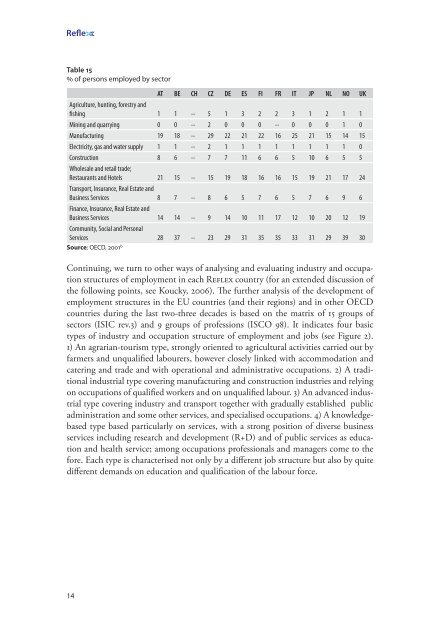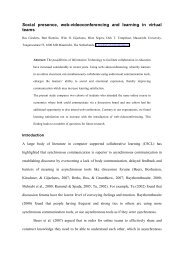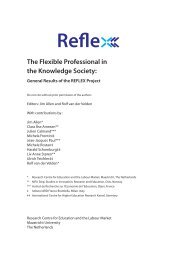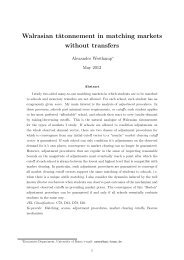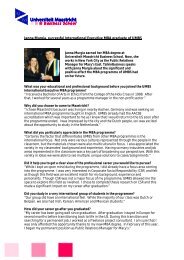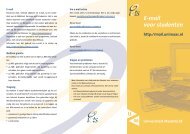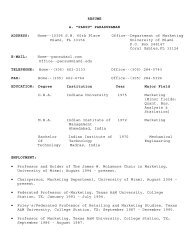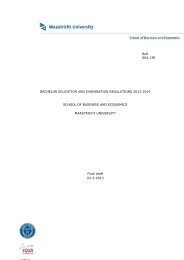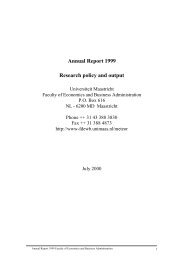Reflex Country study - School of Business and Economics ...
Reflex Country study - School of Business and Economics ...
Reflex Country study - School of Business and Economics ...
You also want an ePaper? Increase the reach of your titles
YUMPU automatically turns print PDFs into web optimized ePapers that Google loves.
Ree<br />
Table 15<br />
% <strong>of</strong> persons employed by sector<br />
AT BE CH CZ DE ES FI FR IT JP NL NO UK<br />
Agriculture, hunting, forestry <strong>and</strong><br />
fishing 1 1 -- 5 1 3 2 2 3 1 2 1 1<br />
Mining <strong>and</strong> quarrying 0 0 -- 2 0 0 0 -- 0 0 0 1 0<br />
Manufacturing 19 18 -- 29 22 21 22 16 25 21 15 14 15<br />
Electricity, gas <strong>and</strong> water supply 1 1 -- 2 1 1 1 1 1 1 1 1 0<br />
Construction 8 6 -- 7 7 11 6 6 5 10 6 5 5<br />
Wholesale <strong>and</strong> retail trade;<br />
Restaurants <strong>and</strong> Hotels 21 15 -- 15 19 18 16 16 15 19 21 17 24<br />
Transport, Insurance, Real Estate <strong>and</strong><br />
<strong>Business</strong> Services 8 7 -- 8 6 5 7 6 5 7 6 9 6<br />
Finance, Insurance, Real Estate <strong>and</strong><br />
<strong>Business</strong> Services 14 14 -- 9 14 10 11 17 12 10 20 12 19<br />
Community, Social <strong>and</strong> Personal<br />
Services 28 37 -- 23 29 31 35 35 33 31 29 39 30<br />
Source: OECD, 2001 b<br />
Continuing, we turn to other ways <strong>of</strong> analysing <strong>and</strong> evaluating industry <strong>and</strong> occupation<br />
structures <strong>of</strong> employment in each <strong>Reflex</strong> country (for an extended discussion <strong>of</strong><br />
the following points, see Koucky, 2006). The further analysis <strong>of</strong> the development <strong>of</strong><br />
employment structures in the EU countries (<strong>and</strong> their regions) <strong>and</strong> in other OECD<br />
countries during the last two-three decades is based on the matrix <strong>of</strong> 5 groups <strong>of</strong><br />
sectors (ISIC rev.3) <strong>and</strong> 9 groups <strong>of</strong> pr<strong>of</strong>essions (ISCO 98). It indicates four basic<br />
types <strong>of</strong> industry <strong>and</strong> occupation structure <strong>of</strong> employment <strong>and</strong> jobs (see Figure 2).<br />
) An agrarian-tourism type, strongly oriented to agricultural activities carried out by<br />
farmers <strong>and</strong> unqualified labourers, however closely linked with accommodation <strong>and</strong><br />
catering <strong>and</strong> trade <strong>and</strong> with operational <strong>and</strong> administrative occupations. 2) A traditional<br />
industrial type covering manufacturing <strong>and</strong> construction industries <strong>and</strong> relying<br />
on occupations <strong>of</strong> qualified workers <strong>and</strong> on unqualified labour. 3) An advanced industrial<br />
type covering industry <strong>and</strong> transport together with gradually established public<br />
administration <strong>and</strong> some other services, <strong>and</strong> specialised occupations. 4) A knowledgebased<br />
type based particularly on services, with a strong position <strong>of</strong> diverse business<br />
services including research <strong>and</strong> development (R+D) <strong>and</strong> <strong>of</strong> public services as education<br />
<strong>and</strong> health service; among occupations pr<strong>of</strong>essionals <strong>and</strong> managers come to the<br />
fore. Each type is characterised not only by a different job structure but also by quite<br />
different dem<strong>and</strong>s on education <strong>and</strong> qualification <strong>of</strong> the labour force.


